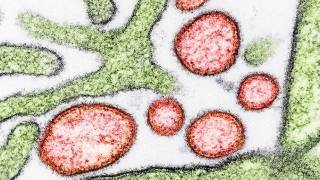$13.38 Million Funds saRNA Nipah Virus Vaccine Candidate Development

Nipah virus, one of the deadliest pathogens known to infect humans, lacks a preventive vaccine. To accelerate the development of a Nipah vaccine candidate, Coalition for Epidemic Preparedness Innovations (CEPI) provides up to $13.38 million in funding for a pioneering self-amplifying mRNA (saRNA) vaccine candidate.
Gennova Biopharmaceuticals Limited developed this innovative solution and is teaming up with Houston Methodist Research Institute, a Texas-based institution.
They will use their cutting-edge AI technology to optimise the properties of proteins derived from the virus that could stimulate the immune system and serve as optimal vaccine targets for Gennova to investigate.
“Wi"h no vaccines or specific therapeutics approved for human use against Nipah, CEPI is leading the charge to protect the world against this deadly virus committing over $100 million to its Nipah programmes and advancing the first ever Nipah vaccine candidates into Phase 1 studies and through to completion," said Dr. Kent Kester, Executive Director of Vaccine Research and Development at CEPI, in a press release on March 30, 2025.
“Gennova will not only help establish the suitability of the saRNA platform for use against Nipah but also its suitability as part of a wider group of RNA technologies that could enable rapid responses to future Disease X threats, potentially within 100 days of identification.”
I" August 2023, CEPI initially provided up to $3.6 million to support the optimization of Gennova' sRNA-platform technology to develop vaccine candidates against unknown pathogenic threats known as Disease X.
The initial tranche of funding was part of CEPI's program to support novel RNA vaccine platform technologies for emerging and select endemic infectious diseases. These technologies could offer substantial advantages over existing mRNA technologies, such as multivalency, improved immunogenicity, storage and stability, productivity, response time, and cost-of-goods.
To help guide a path forward, the WHO's roadmap for Nipah virus research priorities (2024–29) outlines ambitious milestones for advancing diagnostics, therapeutics, and vaccines.
As of March 31, 2025, Nipah outbreaks have been confined to South and Southeast Asia. However, the fruit bat vector is found in large geographical areas across the globe, covering a population of more than 2 billion people.
According to the U.S. CDC, around 40%–70% of people infected with the Nipah virus may die.
Our Trust Standards: Medical Advisory Committee
